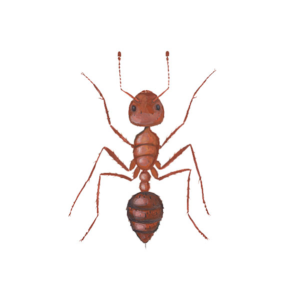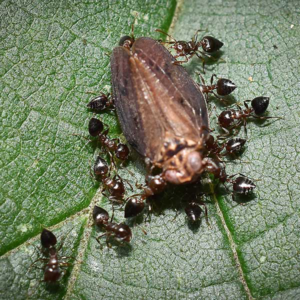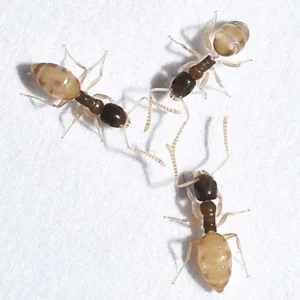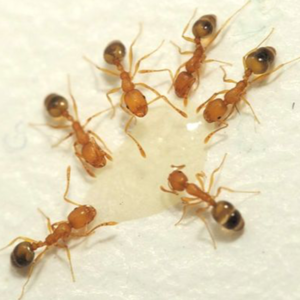Thief Ant Identification
Thief ants get their name from their habit of nesting near other, larger ants, then entering their nest to steal food and prey upon larvae. Found throughout much of North Carolina, their nests are connected to the nests they rob by galleries that are too small for other ant species to access, but big enough for the tiny worker thief ants to move freely. Feeding on rodents and insects, thief ants also feed on potato chips and other greasy foods. They invade homes through cracks and crevices contaminating stored pantry products and packaged food items.
What Do Thief Ants Look Like?
Thief ants, one of the smallest ant species, are typically about 1/16 inch long. They have a smooth, yellowish or light brown body, making them sometimes mistaken for pharaoh ants. However, thief ants have a more slender body shape and their antennae end in a two-segmented club.
Signs of a Thief Ant Infestation
Indicators of a thief ant infestation include seeing these tiny ants near food sources, particularly greasy or high-protein foods. Their small size often enables them to access packaged foods through very small openings.
Habitat, Diet, Life Cycle & Bites
Where Do Thief Ants Live?
Nests outside are located in exposed soil, under rocks, or in rotting wood. Inside homes and businesses, thief ants nest in woodwork and masonry. Thief ants enter structures through small gaps in the foundation or small openings in woodwork during warm weather. They utilize electrical wiring in wall voids to move from room to room. These ants forage in trails throughout a home or building seeking greasy foods, protein, and dairy. Thief ants are commonly found in kitchen and food prep areas of homes and businesses.
Diet of Thief Ants
Their diet consists of proteins, fats, and grease, which they often pilfer from the nests of other ants. Thief ants are also attracted to meat, cheese, oily foods, and dead insects.
Life Cycle of Thief Ants
Thief ants follow a complete metamorphosis life cycle, including egg, larva, pupa, and adult stages. They have a unique ability to exploit the resources of other ant species’ nests, aiding their survival and growth.
Thief Ant Bites
Thief ants can bite but due to their small size, their bites are not painful and are generally not a concern for humans.
Are Thief Ants Dangerous?
Although thief ants rarely bite, they are considered a dangerous pest as they feed on dead rats, mice, and insects, contaminating food as they forage. When entering homes, thief ants may be carriers of disease-producing organisms, transmitting pathogens from a food source to human food. Thief ants trail inside cabinets, on walls, baseboards, tree branches, and shrubs. Due to their small size, they are able to forage into packaged foods. If a thief ant infestation is suspected, it is recommended to contact a licensed ant exterminator.
How to Get Rid of Thief Ants?
Eradicating thief ants involves maintaining cleanliness, especially in food storage areas. Sealing food in airtight containers and ensuring there are no crumbs or grease residues can help. Baits and professional pest control services may be necessary for larger infestations – that’s where Bug Out can help!
Thief Ant Prevention Tips
Prevent thief ants by practicing good sanitation, sealing any cracks or entry points, and storing food properly. Regular inspection and cleaning can help deter these ants.
Need help with Thief Ants control?
FAQs
What is the Difference Between Thief and Pharaoh Ants?
While similar in size and color, thief ants are smaller and slenderer than pharaoh ants. Thief ants’ antennae end in a two-segmented club, while pharaoh ants have a three-segmented club.
How Big Are Thief Ant Colonies?
Thief ant colonies are typically smaller than those of many other ant species, but they can still number in the thousands, depending on the environment and available resources.
What is a Gene Thief Ant?
The term “gene thief ant” does not refer to a specific species. It may be a misinterpretation or a fictional concept not related to actual thief ants.





